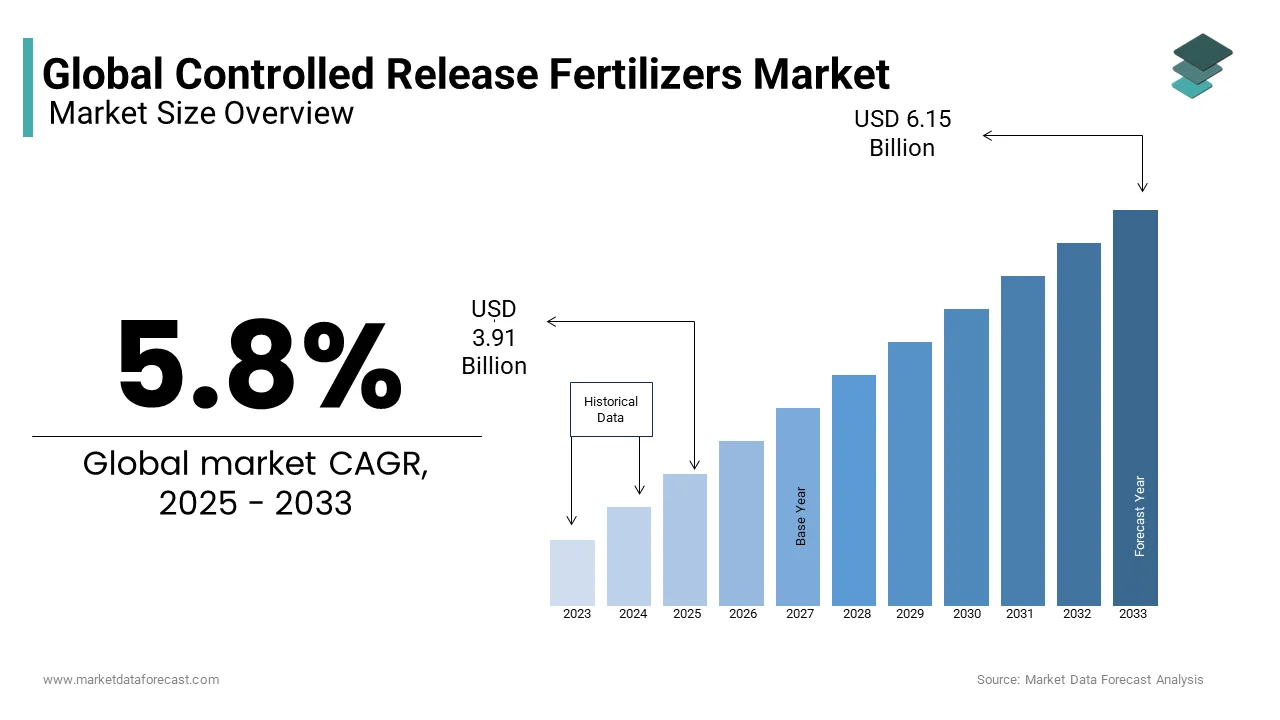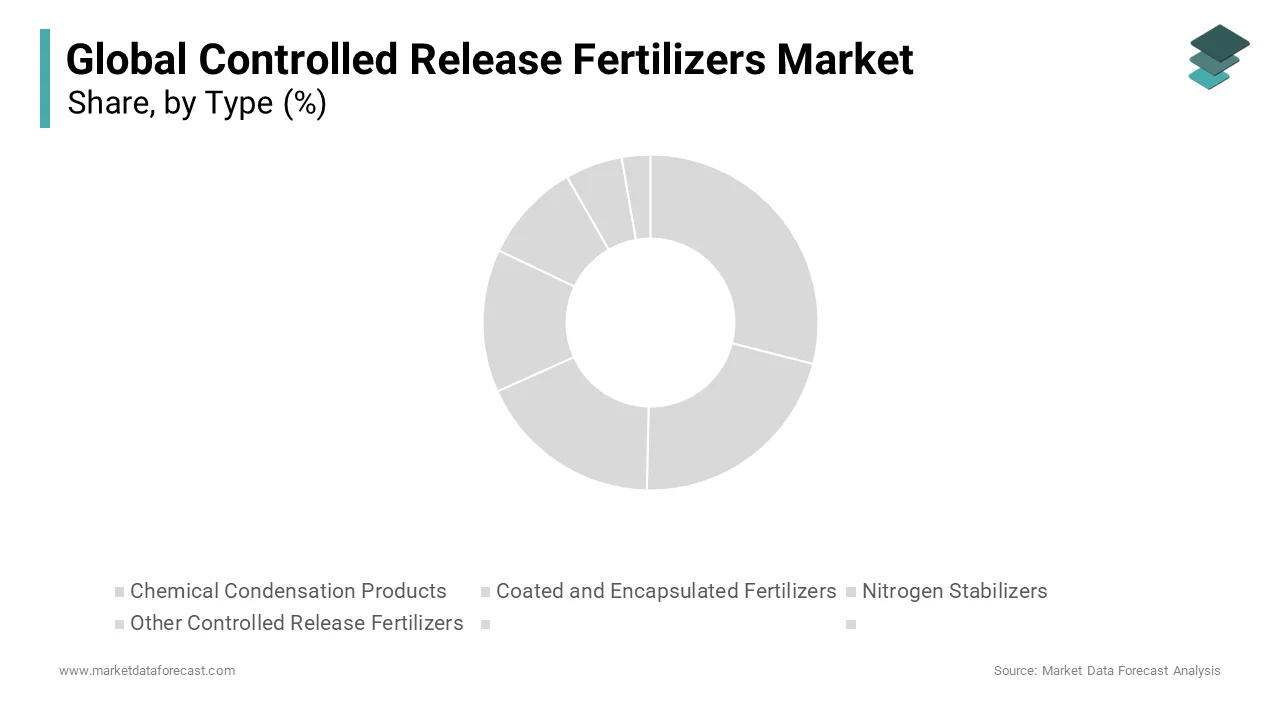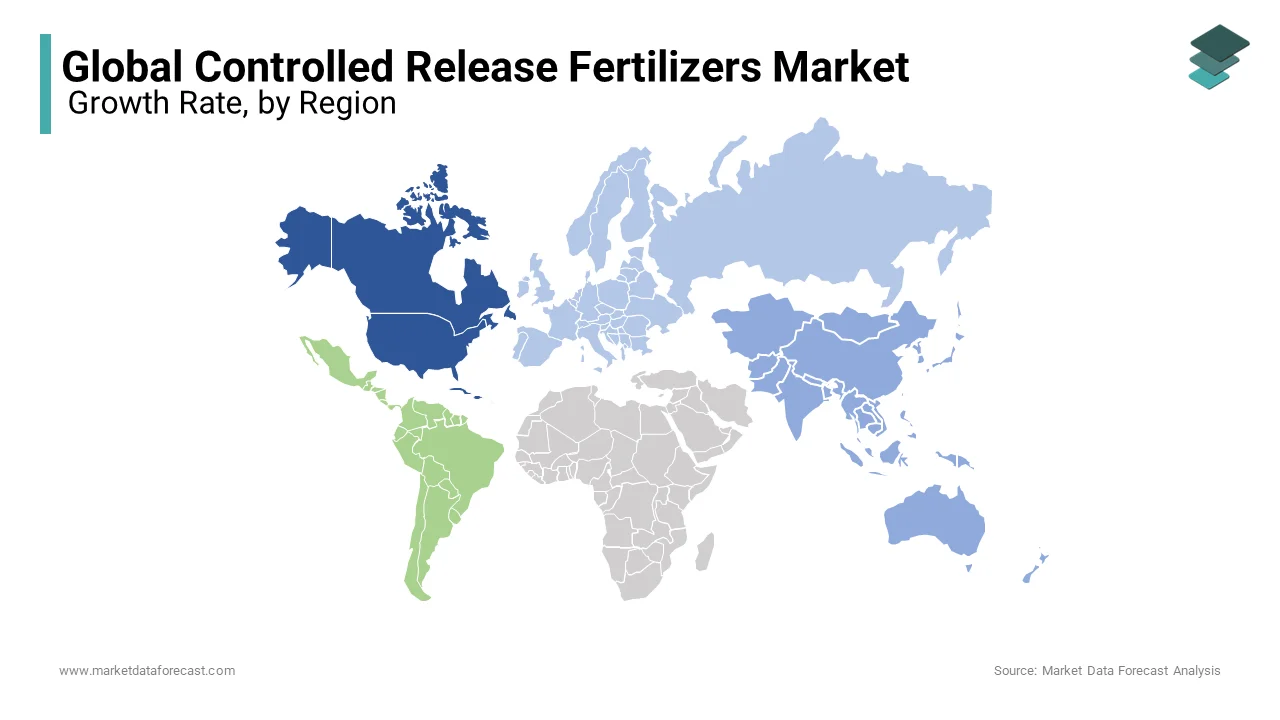Global Controlled Release Fertilizers Market Size, Share, Trends, & Growth Forecast Report, Segmented By Type (Chemical Condensation Products, Coated And Encapsulated Fertilizers, Nitrogen Stabilizers And Other Controlled Release Fertilizers), Application (Crop Based (Grains & Cereals, Oil Seeds And Fruits And Vegetables), Non Crop Based (Turf & Ornamental Grass And Others), And Region (North America, Europe, APAC, Latin America, Middle East And Africa), Industry Analysis From 2025 To 2033
Global Controlled Release Fertilizers Market Size
The global controlled-release fertilizers market was valued at USD 3.7 billion in 2024 and is anticipated to reach USD 3.91 billion in 2025 from USD 6.15 billion in 2033, growing at a CAGR of 5.8% from 2025 to 2033.

These controlled and released fertilizers are recognized to improve agricultural produce, which is a demanding need of the hour due to fast urbanization and a drop in the number of farming jobs as the younger population pursues other professions. Controlled-release fertilizers are part of enriched productivity fertilizers. These are grainy fertilizers that discharge nutrients steadily into the soil. Controlled-release fertilizers are generally coated or encapsulated with inorganic or organic constituents that control the level, pattern, and interval of plant nutrient release.
The difficulty of population outbursts has led to the reduction of arable land, which has generated a situation of increasing demand for higher food consumption and lower production. Reuniting these concerns has dramatically increased demand for controlled-release fertilizers in the past few years. The increasing concerns about food security have persuaded several governments across the globe to approve these fertilizers to raise their productivity and decrease their dependence on food imports. Consequently, despite the advantages of controlled-release fertilizers, the market faces increasing prices, discouraging many farmers from investing in these products.
Current Scenario Of The Global Controlled Release Fertilizers Market
Controlled-release fertilizers are specially developed manure that release fertilizing nutrients in a controlled and delayed manner, distributing nutrients uniformly to the plants. The enhanced nutrient use efficiency and these controlled-release fertilizers are expected to enhance the crop yield and make the soil fertile and rich. The global controlled-release fertilizers market accounted for significant growth and is projected to have notable growth during the forecast period. The controlled-release fertilizers are widely used in the nurseries and greenhouses, contributing to the market growth. Controlled-release fertilizers are becoming widely popular with growers and agronomists and are estimated to increase market growth opportunities. The requirement of lower fertilization levels for healthy crop growth is escalating the adoption of controlled-release fertilizers.
MARKET DRIVERS
The increasing decline in the arable land for agricultural practices worldwide is the primary factor contributing to enhanced demand for innovative farming techniques, which drives global market growth. According to the data provided by the FAO projections, per capita arable land is expected to decrease from 0.21 hectares per person to 0.18 hectares by 2050. The growing land degradation worldwide is due to increased usage of synthetic fertilizers and chemicals, leading to water pollution and soil pollution by making land with limited nutrient value. Various research scientists state that around 24 billion fertile soil is lost annually due to increased unsustainable agricultural practices. These scenarios enhance the adoption of controlled-release fertilizers, leading to substantial market growth. The increased benefits of controlled-release fertilizers are escalating market growth due to broader adoption among farmers as these provide continuous and uniform nutrients for plants.
The growing positive effects of controlled-release fertilizers, which comprise higher crop yields, better distribution, increased plant weight, and productivity, are global market growth rate. The immediate release of nutrients by the controlled release fertilizers will reduce the fertilizer application by around 20 to 25% due to the minimal risk of leaching, boosting the global market revenue.
MARKET RESTRAINTS
The high costs associated with controlled-release fertilizers compared to traditional fertilizers owing to their requirement for extra processing and expensive raw materials are the primary factors restraining the growth of the global controlled-release fertilizers market. Most of the controlled-release fertilizers may not release the nutrients as planned, which may lead to nutrient deficiencies, and these scenarios are widely observed during floods, droughts, or low temperatures, which hamper the market growth. The presence of various storage limitations and cases of uncontrolled release patterns may show a negative impact on the environment, which increases environmental concerns, leading to restricted market growth. The release rate of the controlled release fertilizers is mainly affected by environmental factors such as temperature and moisture, which reduce the effectivity of the fertilizers, impeding the market growth rate. Few scenarios of plant toxicity and lack of control over the size of nutrients released may limit the adoption rate, leading to restricted market growth.
MARKET OPPORTUNITIES
The increased investments by various organizations in research activities for developing polymer-coated fertilizers are a significant factor driving the global market growth opportunities for controlled-release fertilizers. Market players' growing focus on developing lower-cost and effective fertilizers is expected to provide market growth opportunities in the coming years. The controlled-release fertilizers limit labor costs, especially during crucial crop growth periods, enhancing farmers' adoption rate in the coming years. Various other benefits of the controlled release fertilizers, such as enhanced soil growth, healthy plant growth, and limited risk of fertilizer burn, along with the ease of utilization, will augment the market growth globally.
MARKET CHALLENGES
The lack of flexibility in the controlled release fertilizers and the limited sustainability as they may only be suitable for some crops and soil challenge the market growth. The presence of stringent regulations for the approval of fertilizers involves complexity and more extended time consumption, which increases the overall price of the products. This acts as a significant challenge to the manufacturers in expanding the market revenue. The consistent release of nutrients at a particular rate is another drawback of controlled-release fertilizers, as the release rate of nutrients may differ for plant growth.
REPORT COVERAGE
|
REPORT METRIC |
DETAILS |
|
Market Size Available |
2024 to 2033 |
|
Base Year |
2024 |
|
Forecast Period |
2025 to 2033 |
|
CAGR |
5.8% |
|
Segments Covered |
By Type, Application, And Region |
|
Various Analyses Covered |
Global, Regional and Country Level Analysis; Segment-Level Analysis; DROC; PESTLE Analysis; Porter’s Five Forces Analysis; Competitive Landscape; Analyst Overview of Investment Opportunities |
|
Regions Covered |
North America, Europe, APAC, Latin America, Middle East & Africa |
|
Market Leaders Profiled |
The Chisso Corporation, Shandong Shikefeng Chemical Industry Co. Ltd, Kingenta Ecological Engineering Group Co. Ltd., Scotts Miracle-Gro Company, Agrium, Yara International, Israel Chemicals Ltd, Compo GmbH Co, Sociedad Quimica Y Minera S.A., and Haifa Chemicals Limited |
SEGMENT ANALYSIS
By Type Insights
The coated and encapsulated fertilizers segment dominates the global controlled-release fertilizers market with a significant market share and is expected to register the highest CAGR during the forecast period. The extensive adoption of these fertilizers and their wide availability across developed and emerging nations is fueling the segment growth. The fertilizers coated with polyolefin resin are gaining huge traction among people due to their extensive controlled nutritional release, which is boosting the segment growth rate. The increased utilization of various synthetic polymer coatings for encapsulating fertilizers is propelling market growth owing to enhanced nutritional uptake in the plants. The escalating research activities for developing cost-effective and biodegradable coating fertilizers are accelerating revenue growth.

By Application Insights
Noncrop-based fertilizers hold the most significant share in the global controlled-release fertilizers market and are anticipated to dominate in the coming years. The growing demand for controlled-release fertilizers across non-agricultural practices such as gardening, landscaping, and turf management is boosting the segment growth rate. The rise in consumer preferences towards the pleasing green spaces setup is positively influencing the segment growth. The growing number of nurseries, greenhouses, and high turf production in lawns is enhancing the demand for controlled-release fertilizers, leading to segment revenue expansion.
The crop-based fertilizers segment is estimated to grow considerably during the forecast period. The growing demand for sustainable agricultural practices owing to the requirement of higher crop yields propelling the segment growth rate in the coming years. The fruits and vegetables sector is estimated to register the highest growth rate during the forecast period.
REGIONAL ANALYSIS
North America is the dominant region in the controlled-release fertilizer market. The Asia Pacific is projected to be the most substantial regional segment in the coming years. This regional demand will be led by China as the demand to nourish the bursting population base remains to ask for greater crop yields in the coming years.

The Asia Pacific region dominated the controlled-release fertilizers market with a prominent share and is projected to witness a notable CAGR in the coming years. With significant market players across the region, increased agricultural practices are contributing to the growth of regional market share. The growing support from various public and private organizations and the rising investments in the research sector to enhance the effectiveness of fertilizers is augmenting the regional market growth. The rising government support initiatives for enhancing crop cultivation, turf, and landscaping rise activities multiply the market growth opportunities. The increasing adoption of advanced farming techniques, rapid urbanization, growing population across the region, and the increased agricultural practices across regional countries such as China, India, and others proliferates regional market revenue.
The North American region held the second-largest share in the controlled-release fertilizers market, where the United States dominates the regional market revenue. The regional countries have agricultural policies and procedures and supportive regulatory authorities leading the regional market growth rate. The increased demand for controlled-release fertilizers across the horticulture sector in the United States fuels the market growth in the North American region.
The European region is predicted to have steady growth rate in the coming years due to enlarging farming practices across the region. The increased demand for the sustainable and effective farming techniques is rising the adoption of controlled-release fertilizers as these enhance the use of nutrients efficiently to the plants.
KEY MARKET PLAYERS
The Chisso Corporation, Shandong Shikefeng Chemical Industry Co. Ltd, Kingenta Ecological Engineering Group Co. Ltd., Scotts Miracle-Gro Company, Agrium, Yara International, Israel Chemicals Ltd, Compo GmbH Co, Sociedad Quimica Y Minera S.A., and Haifa Chemicals Limited are some of the notable companies in the global controlled release fertilizers market.
RECENT HAPPENINGS IN THIS MARKET
- In May 2022, ICL announced the launch of three new innovative NPK formulations of Solinure, comprising increased trace elements to optimize crop yield.
- In September 2022, ICL announced the launch of eqo.x, a new technology for controlled-release fertilizers which utilises biodegradable coating. This innovative new technology is developed to meet the European fertilizer standards which will come into effect by 2026.
- In June 2023, BASF and Yara Clean Ammonia announced their collaboration to enlarge the establishment of large-scale and low-scale blue ammonia production facilities in the United States.
MARKET SEGMENTATION
This research report on the global controlled release fertilizers has been segmented and sub-segmented based on type, application, and region.
By Type
- Chemical Condensation Products
- Coated and Encapsulated Fertilizers
- Nitrogen Stabilizers
- Other Controlled Release Fertilizers
By Application
- Crop Based Fertilizers
- Grains & Cereals
- Oil Seeds
- Fruits & Vegetables
- Non-Crop
- Turf & Ornamental Grass and Other Non-Crop Based Fertilizers
By Region
- North America
- Europe
- Asia-Pacific
- Latin America
- Middle East and Africa
Frequently Asked Questions
1. What are the main benefits of using controlled release fertilizers?
Controlled Release Fertilizers offer several benefits, including improved nutrient efficiency, reduced environmental impact, enhanced crop yields and quality, and decrease labor and application costs due to fewer fertilizer applications.
2. What factors are driving the growth of the controlled release fertilizers market?
The growing demand for high-efficiency fertilizers, increasing adoption of precision farming techniques, rising environmental concerns related to nutrient runoff and pollution, and government regulations promoting sustainable agriculture are key factors driving the Controlled Release Fertilizers market growth.
3. Are there any limitations or challenges associated with using controlled release fertilizers?
While Controlled Release Fertilizers offer many benefits but may have higher initial costs than conventional fertilizers, and environmental factors and management practices can influence their effectiveness. Additionally, proper application and timing are crucial to maximizing their benefits.
Related Reports
Access the study in MULTIPLE FORMATS
Purchase options starting from $ 2500
Didn’t find what you’re looking for?
TALK TO OUR ANALYST TEAM
Need something within your budget?
NO WORRIES! WE GOT YOU COVERED!
Call us on: +1 888 702 9696 (U.S Toll Free)
Write to us: [email protected]